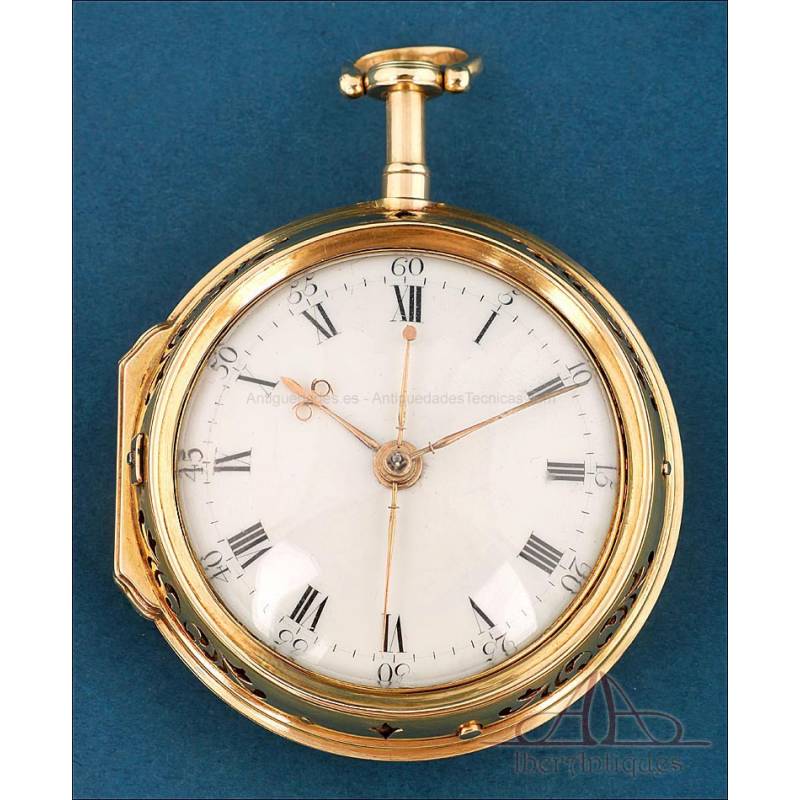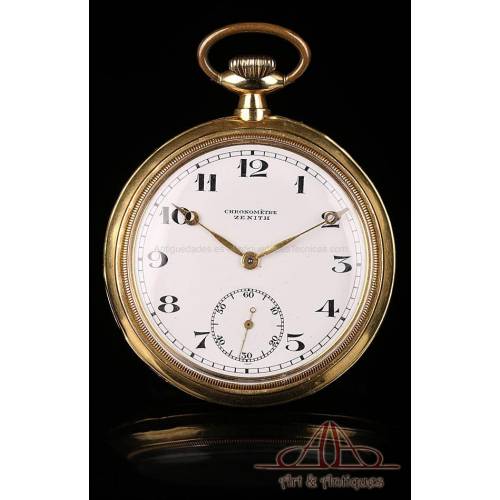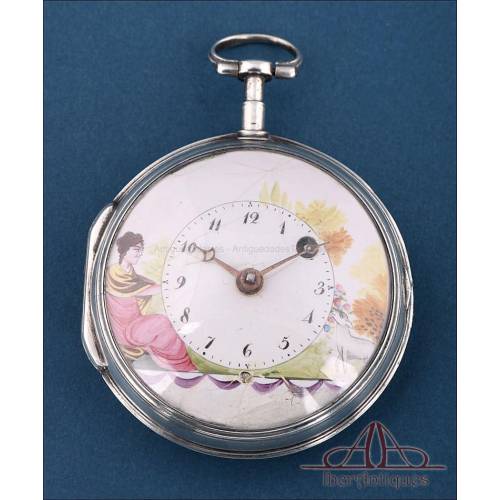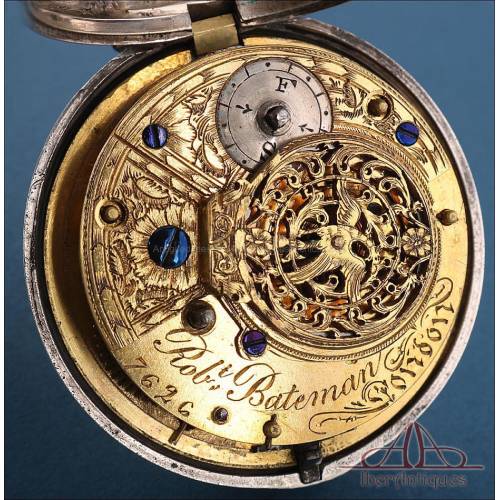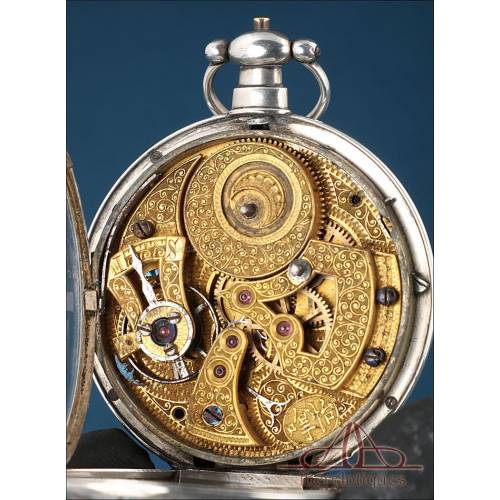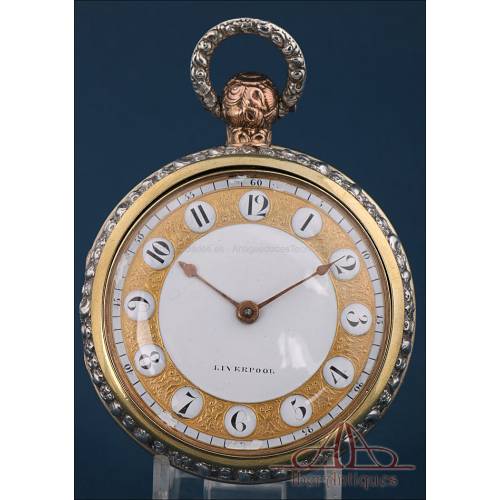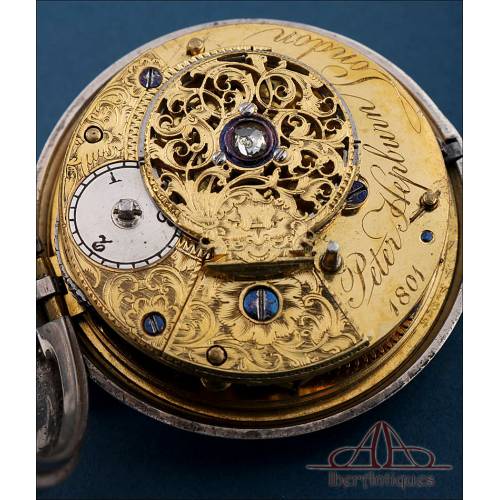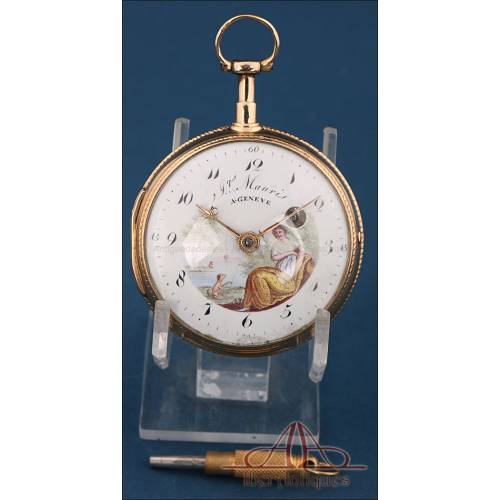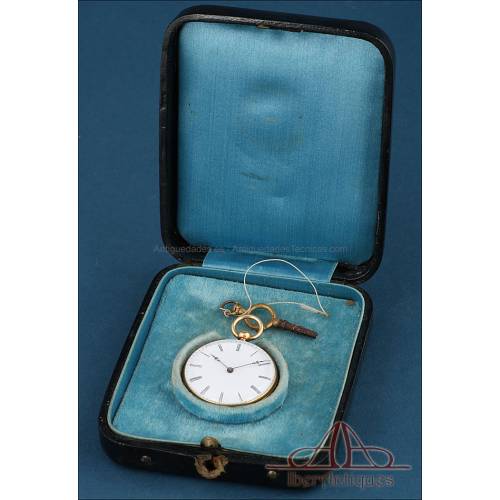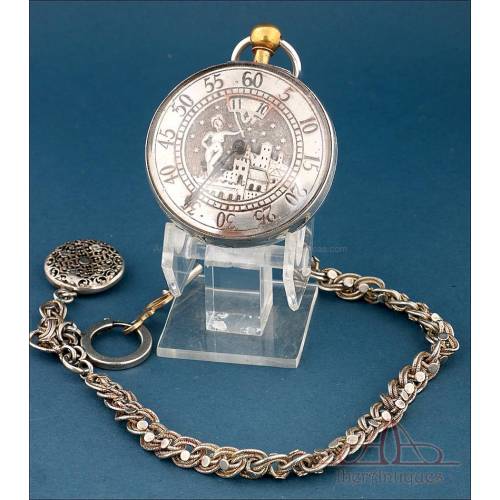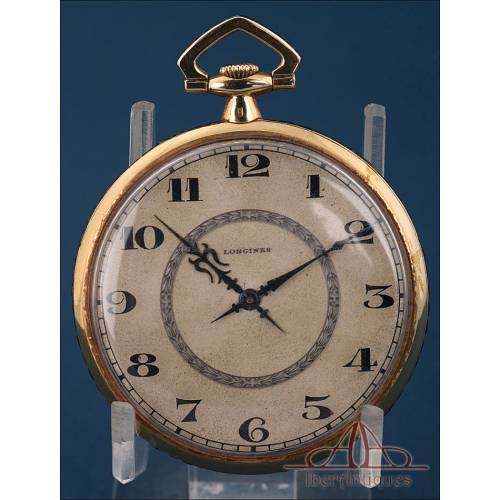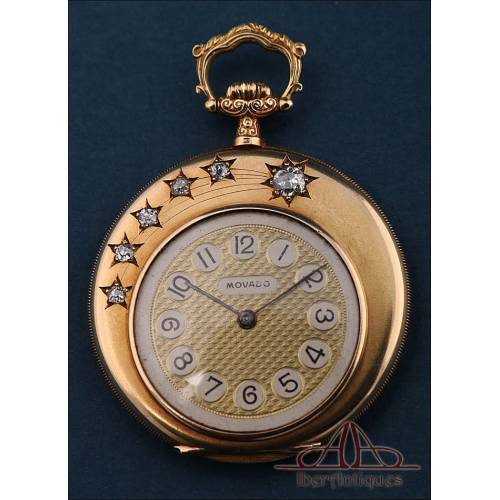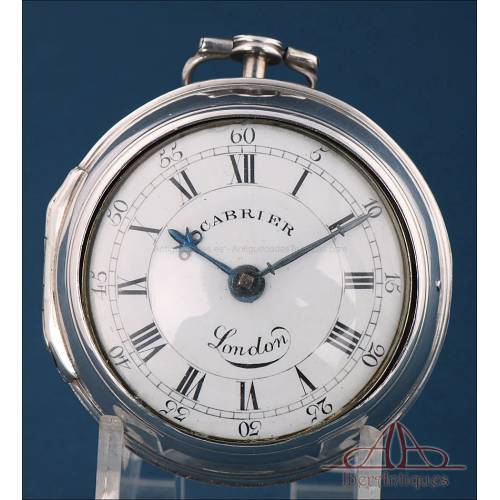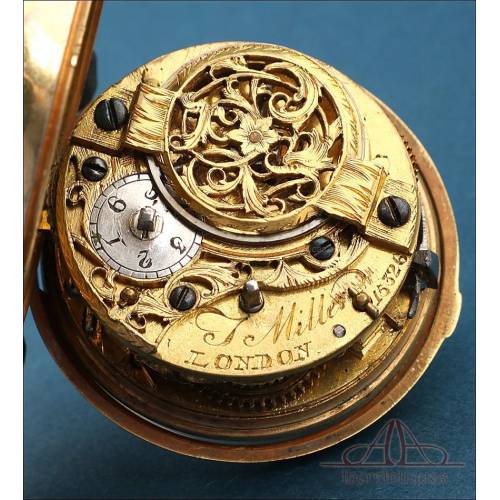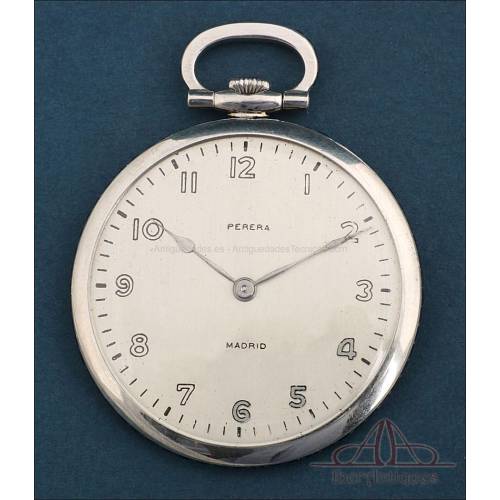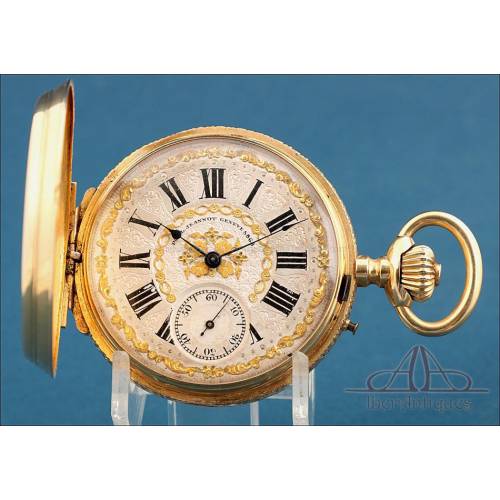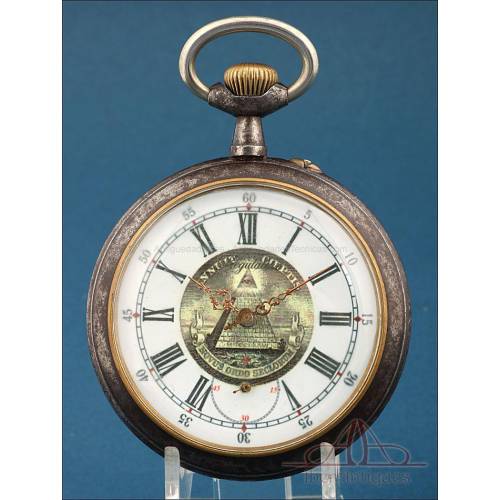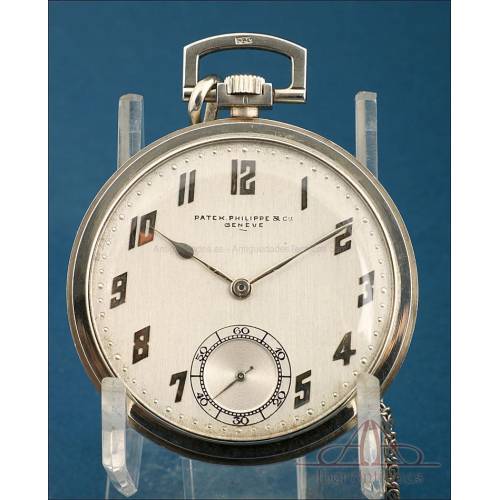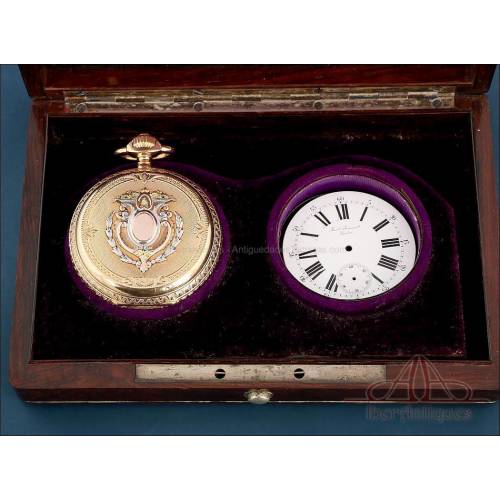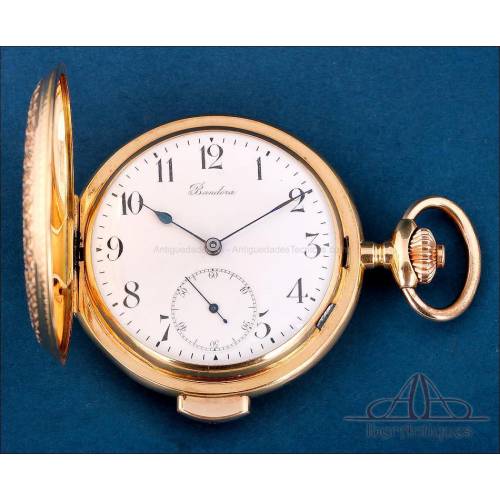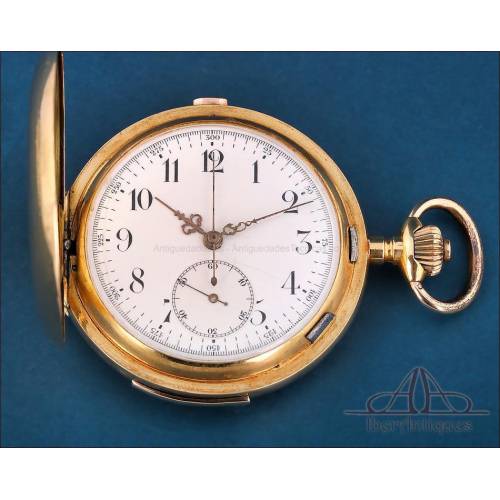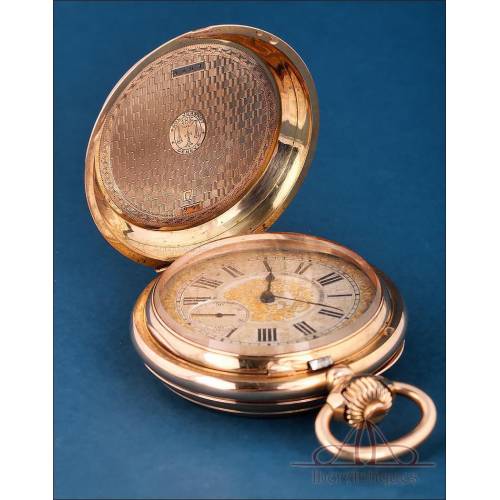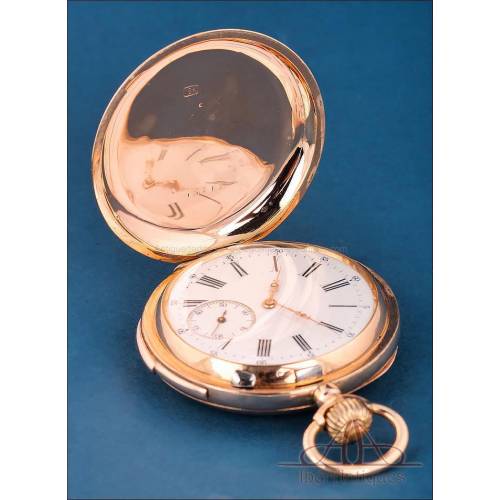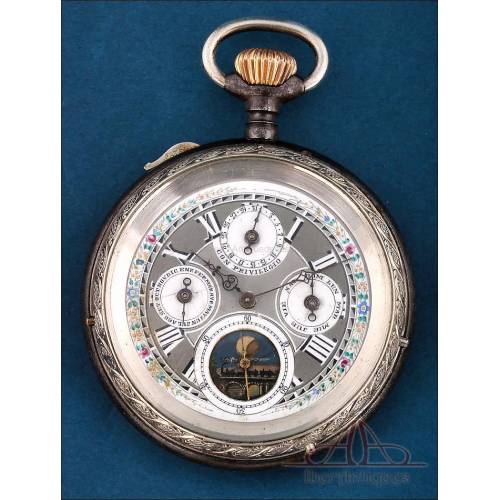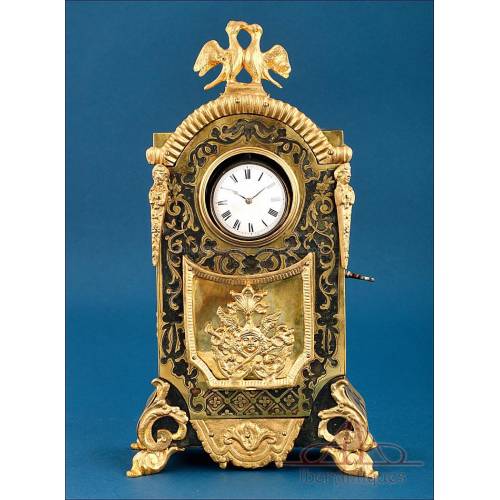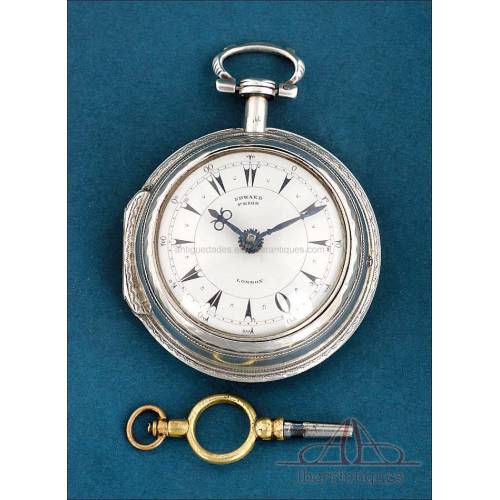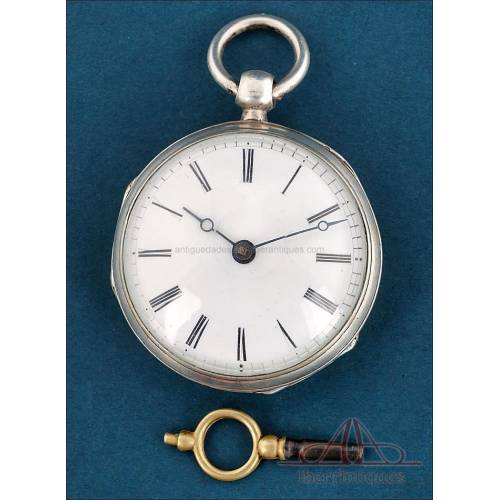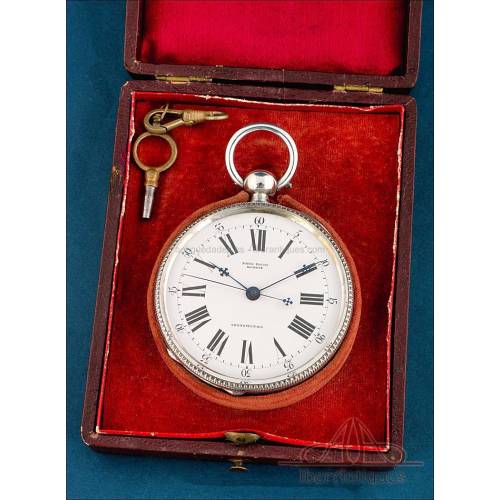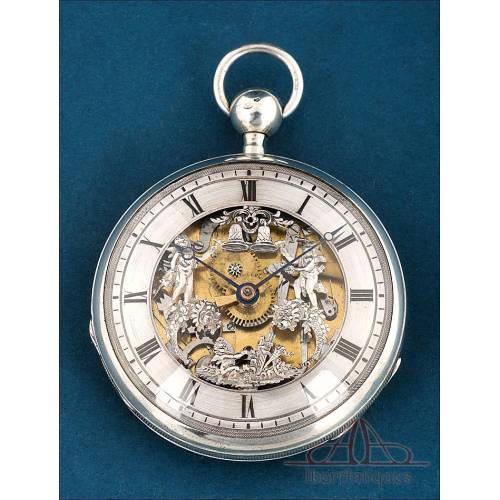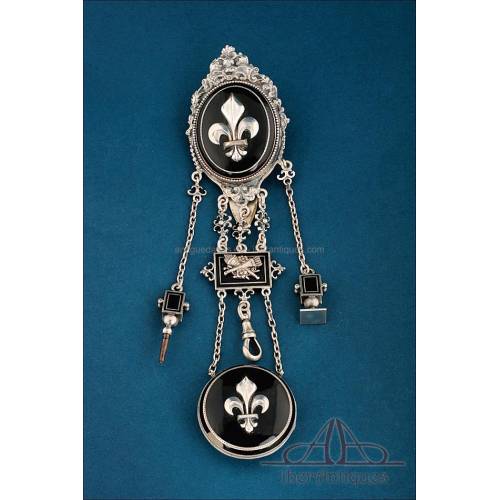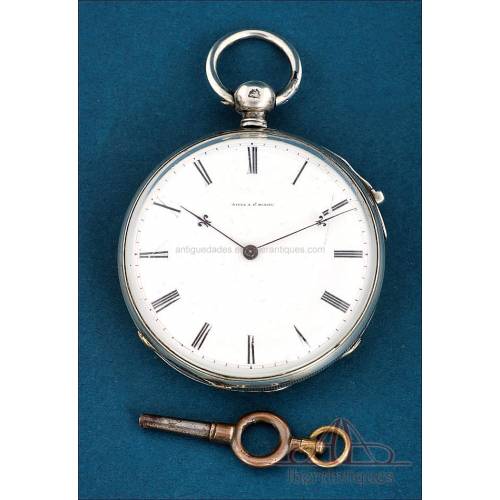E-167
Rare Early Gold Cylinder Pocket Watch with 1/8th Repeating. England, c. 1770
18K gold cylinder watch, two cases, with half quarter-repeating chime and early chronometer. Signed by William Hughes, London, c. 1770. Fine details and excellent preservation.
Rare Early Gold Cylinder Pocket Watch with 1/8th Repeating. England, c. 1770
This impressive late 18th-century pocket watch, in good working condition, is crafted in 18K gold, dated around 1770, and was made by the renowned watchmaker William Hughes in London, England. It is an exceptional work of art and precision, originating from prestigious English watchmaking, and represents one of the earliest examples of pocket watches with a cylinder movement. This watch features quarter striking, which can be activated "à toc" by pressing a button, in addition to a central second hand with a doctor’s stop—a primitive chronometer a century before modern chronometers. It splendidly represents the skill and mastery of 18th-century watchmaking.
The cylinder movement was an innovation in watch technology introduced in the early 18th century by the English watchmaker George Graham around 1726. This cylinder escapement system replaced the less precise verge escapement, providing a more efficient and compact mechanism. The invention of the cylinder escapement not only improved accuracy but also allowed for thinner watches, a significant advancement that led to this system becoming the standard in high-quality pocket watches during the 18th and early 19th centuries. Watches with this feature are particularly rare and highly valued, being cherished pieces among collectors and horological historians.
This model, crafted in 18K gold for both the inner and outer cases, stands out not only for its beautiful design but also for its mechanical complexity and extraordinary state of preservation. The two cases—one nested inside the other—effectively protect its delicate mechanism and add a luxurious touch to the piece. The inner case features intricate engravings of floral and stylized leaf motifs, executed with remarkable attention to detail, while the outer case, adorned with artistic perforations, enhances the watch’s aesthetics and allows for a clearer resonance of the striking mechanism.
Notably, the quarter striking, also known as “at eighths,” is a rare and precise feature in this type of watch. This mechanism marks the time every 7.5 minutes, adding a bell chime up to seven complete chimes at the 52.5-minute mark. This characteristic reflects the sophistication and complexity of its design and is a symbol of the technical skill achieved by Hughes in his London workshop.
Additionally, the watch includes a "doctor’s stop" feature, which allows the central hand to be stopped via a side button, enabling precise time interval measurement. This feature was particularly advanced for its time, as chronometers with a stop function as we know them today would not appear until a century later. Although this system was often used in the medical field, it was also valued in other sectors, such as sports, being especially interesting for horse racing enthusiasts and allowing its user notable precision in activities requiring exact time measurement.
The watch’s internal movement, also signed by William Hughes and numbered 3576, is protected under a finely decorated gilt metal cover. This mechanism is engraved with floral details and scrollwork, highlighting the exceptional level of craftsmanship and aesthetics that Hughes instilled in each of his watches. Inside the cover are other meticulous decorations surrounding the mechanism, demonstrating the watchmaker’s dedication to creating a piece of extreme beauty and functionality.
This watch, with its advanced cylinder movement and quarter striking system, is not only a historical piece but also a wonderful example of English precision watchmaking and 18th-century elegance. Its state of preservation makes it a secure investment and a high-value collector's piece, ideal for showcasing the splendor of a bygone era.
Measurements: Diameter: 55 mm (2.17 in). Weight: 153.6 g.
History of the Cylinder Movement
The cylinder escapement, an innovation introduced in 1726 by English watchmaker George Graham, revolutionized the accuracy and design of pocket watches. Unlike the verge escapement, which dominated until then and was known for its lesser precision, the cylinder escapement provided a more accurate and efficient mechanism, allowing for the production of thinner watches. This improvement was quickly adopted in high-end watchmaking and became the standard in quality watches of the 18th and early 19th centuries. The cylinder system was also an essential step in the evolution of watches, offering superior durability that attracted the leading watchmakers in Europe, especially in England and France.
The cylinder escapement remained in use for more than a century, although it was eventually replaced by more advanced mechanisms. However, watches with this system are now highly valued by collectors and enthusiasts, as they represent an era of innovation and technical refinement in horological history. The inclusion of a cylinder escapement in this William Hughes watch adds special value, showcasing both the innovation of its time and the technical skill of its creator.

